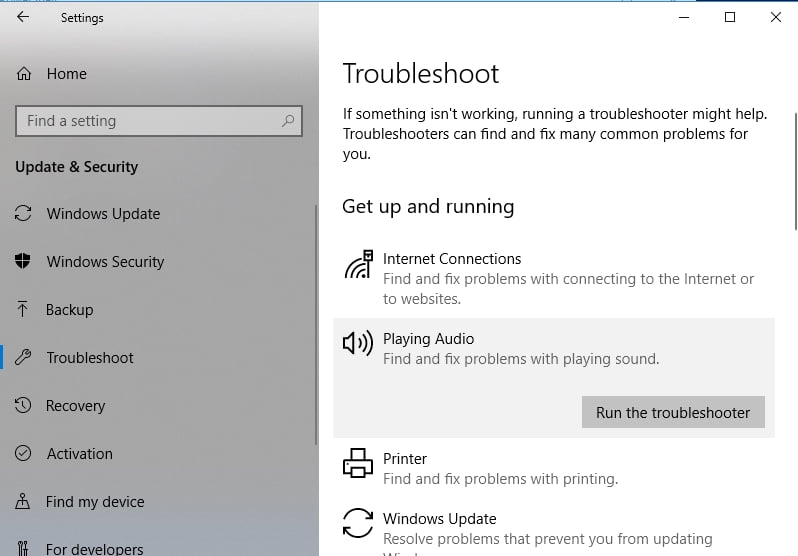

To create a smoother and more reliable install experience and to better support component servicing, divide the driver installation process into the following components.
Via hd audio drivers windows 10 code#
Replace those calls with alternate calls, or create a code workaround, or write a new driver.Ĭreating a componentized audio driver installation Overview If the driver calls interfaces that are not part of OneCoreUAP, compiler displays errors. For more information, see Validating Universal Windows Drivers. This tool is part of the Windows Driver Kit (WDK) for Windows 10, and runs automatically if you are using Visual Studio 2015. Use the ApiValidator.exe tool to verify that the DDIs that your driver calls are valid for a Universal Windows driver. In the project properties, set Target Platform to "Universal". Recompile your driver as a Universal Windows driver. For more information see Audio Devices Reference. Check the requirements section of the reference pages. The following DDIs to are available when working with universal audio drivers.Ĭonvert an Existing Audio Driver to a Universal Windows driverįollow this process to convert an existing audio driver to a Universal Windows driver.ĭetermine whether your existing driver calls will run on OneCoreUAP Windows. Those drivers will run on both Windows 10 for desktop editions and Windows 10 Mobile, and other Windows 10 versions. By using that common set, you can write a Universal Windows driver. Starting with Windows 10, the driver programming interfaces are part of OneCoreUAP-based editions of Windows. Available Programming Interfaces for Universal Windows drivers for Audio For more information, see Sample Audio Drivers. Sysvad and SwapAPO have been converted to be Universal Windows driver samples. spkg file.īuild, install, deploy, and debug the driver for Windows 10 for desktop editions or Windows 10 Mobile. If your target is device running Windows 10 Mobile, use PkgGen to generate an. In the project properties, set Target Platform to "Universal".Ĭreate an installation package: If your target is device running Windows 10 for desktop editions (Home, Pro, Enterprise, and Education), use a configurable INF file. Alternatively, start with the empty WDM driver template and add in code from the universal sysvad sample as needed for your audio driver. Load the universal audio sysvad sample to use as starting point for your universal audio driver. For more information, see Audio Devices Reference.įor step-by-step guidance, see Getting Started with Universal Windows Drivers. Updated DDI reference documentation: The DDI reference documentation is being updated to indicate which DDIs are supported by Universal Windows drivers. For more information about setting up the driver development environment, see Getting Started with Universal Windows Drivers.ĪPIValidator Tool: You can use the ApiValidator.exe tool to verify that the APIs that your driver calls are valid for a Universal Windows driver. Visual Studio 2015 Support: There is a driver setting to set “Target Platform” equal to “Universal”. These tools are available to develop Universal Windows driver support: This can reduces development time and cost for initial development and later code maintenance. IHVs can develop a Universal Windows driver that works on all devices (desktops, laptops, tablets, phones). Getting Started with Universal Windows drivers for Audio In addition to the Universal Windows drivers for audio, Windows continues to support previous audio driver technologies, such as WDM. This topics discusses the benefits of this approach as well as the differences between different platforms. In Windows 10 you can write a universal audio driver that will work across many types of hardware.


 0 kommentar(er)
0 kommentar(er)
